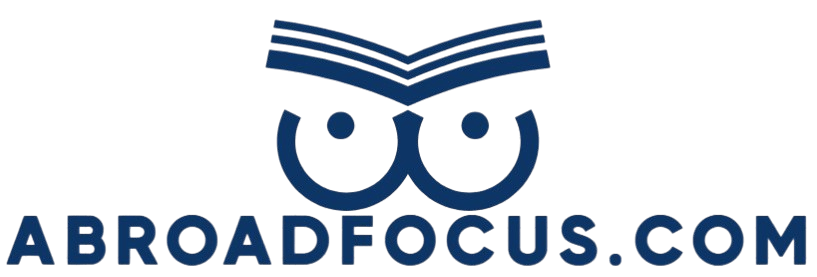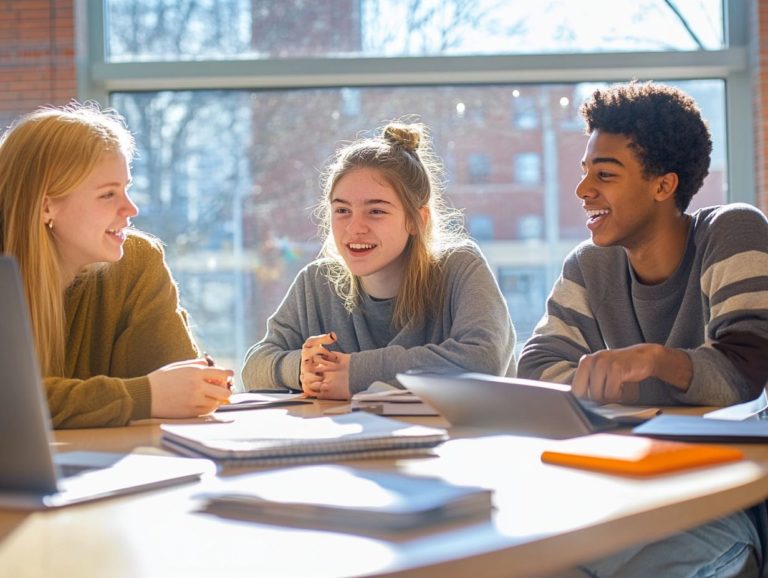Scholarship Interviews: Tips to Impress the Panel
Securing a scholarship can transform your education and future. Remember, the journey extends beyond just submitting your application.
The interview is your chance to shine and leave a lasting impression on the panel. This guide will empower you with essential steps for effective preparation from understanding the scholarship to mastering common interview questions.
You ll learn how to present yourself professionally, tackle tough questions confidently, and follow up to express your enthusiasm. With these strategies, you’ll be ready to impress and stand out from the competition.
Contents
- Key Takeaways:
- Preparing for a Scholarship Interview
- How to Make a Good First Impression
- Answering Interview Questions Effectively
- Handling Difficult Questions
- Following Up After the Interview
- Frequently Asked Questions
- 1. What are some tips to stand out in a scholarship interview?
- 2. How should I prepare for a scholarship interview?
- 3. What should I wear to a scholarship interview?
- 4. How can I make a good first impression during a scholarship interview?
- 5. What types of questions should I prepare for in a scholarship interview?
- 6. How can I leave a lasting impression after a scholarship interview?
Key Takeaways:

Preparing for a Scholarship Interview
Preparing for a scholarship interview is crucial for securing funding for your education. Whether you re aiming for awards like the Palmetto Fellows or HOPE scholarship, a solid strategy is essential.
Successful candidates know that thorough preparation is key. Research both the scholarship details and the colleges involved.
Understand how your academic achievements and community involvement align with the scholarship goals. Show the unique value you offer.
Researching the Scholarship and Interview Format
Researching the scholarship and interview format is vital for your success. Understand the specific criteria valued by the scholarship committee.
Dive into the scholarship’s website to learn what the committee expects. Don’t hesitate to reach out to previous recipients for valuable insights.
Explore colleges aligned with your career goals. Practice common interview questions, craft a clear narrative of your achievements, and maintain a confident demeanor.
Practicing Common Interview Questions
Practicing common interview questions can enhance your performance. Simulate the interview environment to build confidence and reduce anxiety.
It s not just about memorizing answers; it s about expressing your thoughts clearly. Prepare for questions like “What motivates you?” and “Can you describe a challenge you’ve overcome?”
Conduct mock interviews with a friend or mentor for feedback. This helps you refine your responses and present your authentic self.
How to Make a Good First Impression
Making a strong first impression can significantly boost your chances in a scholarship interview. A professional appearance sets a positive tone for your meeting.
Dressing professionally shows your commitment to the scholarship opportunity and respect for the process. Remember, first impressions also depend on your demeanor, body language, and how you convey your passion for education and future goals.
Dressing and Presenting Professionally

Dressing and presenting yourself professionally is essential for leaving a strong impression during your scholarship interview. Choose your attire thoughtfully based on your industry and the interview’s context.
For traditional fields like finance or law, opt for a tailored suit in neutral tones. In more casual sectors, a smart-casual ensemble, such as dress pants with a blouse or collared shirt, can be appropriate.
Regardless of the setting, ensure your clothes are clean, well-fitted, and wrinkle-free. A polished appearance influences how the committee perceives you, reinforcing their sense of your seriousness and commitment to the opportunity.
Body Language and Nonverbal Communication
Body language speaks volumes in scholarship interviews. Your eye contact builds trust, while an upright posture shows confidence.
Be mindful of your posture and gestures; they enhance your verbal delivery and engage interviewers. Intentional gestures emphasize your points, making your responses memorable.
By honing your communication skills, you reinforce what you express verbally, showcasing your unique qualities and leaving a strong impression. A seamless blend of body language and verbal communication enriches the overall conversation.
Answering Interview Questions Effectively
Answering interview questions well is key to showcasing your qualifications. Clear, structured responses reveal your skills and thought process.
Scholarship committees seek candidates who can articulate their academic achievements, leadership experiences, and distinctive qualities. Prepare structured answers that connect to your personal growth to demonstrate your potential as a deserving scholarship recipient.
Structuring Your Answers
Structure your answers to communicate your qualifications effectively. Using frameworks like STAR (Situation, Task, Action, Result) helps you craft engaging narratives that showcase your strengths.
For example, when discussing a challenging project, set the scene with the situation, clarify the requirements, detail the actions you took, and conclude with the positive results.
This approach makes your responses memorable and ensures interviewers grasp your message promptly, amplifying the impact of your answers.
Highlighting Your Achievements and Goals
Highlighting your achievements and goals allows you to showcase your growth. By elaborating on specific accomplishments, you demonstrate how past experiences inform your future aspirations.
Make sure to connect what you’ve learned to your career objectives. Use the STAR method to structure your examples, ensuring you convey relevant details compellingly. This approach helps interviewers see the value you bring and encourages reflection on your personal and professional development.
Handling Difficult Questions

Handling difficult questions in a scholarship interview can feel daunting. However, with the right preparation and practice, you can respond with confidence.
Tricky questions are often designed to evaluate your resilience, problem-solving skills, and ability to overcome challenges. Scholarship committees look for candidates who tackle obstacles with a positive mindset and demonstrate a genuine eagerness to learn.
By anticipating these questions, you can highlight your strengths and express your commitment to both personal and academic excellence.
Navigating tricky questions during a scholarship interview requires careful thought and clear communication.
When faced with challenging moments, take a deep breath and center yourself before responding. Practicing active listening, which means really focusing on the question, helps you provide a thoughtful reply that resonates with the committee.
Techniques like pausing briefly to gather your thoughts can prevent rushed answers that often lead to misunderstandings. Providing honest and reflective responses showcases your personal insights and fosters a genuine connection with the interviewers. This shows you are genuine and willing to engage.
Following Up After the Interview
Following up after a scholarship interview is crucial for expressing your gratitude and reaffirming your interest in the scholarship opportunities available. Sending a thank-you note shows your appreciation and keeps you on the radar of the decision-makers.
Thanking the Panel and Showing Continued Interest
Expressing gratitude to the panel and showcasing your continued interest after your scholarship interview speaks volumes about your professionalism.
This gesture conveys appreciation for the opportunity and reaffirms your enthusiasm for the scholarship program. When crafting an effective thank-you note, personalize each message by recalling specific moments from the interview that resonated with you or aligned with your values.
Send this note within a few days of the interview to demonstrate your promptness and genuine interest. This follow-up can affirm your suitability and passion for the opportunity you seek.
Frequently Asked Questions
1. What are some tips to stand out in a scholarship interview?

To impress the panel in a scholarship interview, research the organization offering the scholarship, practice common interview questions, and highlight your unique strengths and experiences.
2. How should I prepare for a scholarship interview?
To prepare for a scholarship interview, research the organization, practice answering common questions, and prepare your own questions for the panel. Dressing professionally and arriving early can also boost your confidence.
3. What should I wear to a scholarship interview?
Dress professionally for a scholarship interview, such as in a suit or dress pants and blouse. Ensure your outfit is clean, pressed, and appropriate for the occasion.
4. How can I make a good first impression during a scholarship interview?
To make a good first impression, arrive early, greet the panel with a smile and firm handshake, and maintain good eye contact. Remember to speak confidently and clearly.
5. What types of questions should I prepare for in a scholarship interview?
Common questions in a scholarship interview may include your academic goals, extracurricular activities, and why you are a good fit for the scholarship. Be ready to discuss your strengths and weaknesses as well.
6. How can I leave a lasting impression after a scholarship interview?
Thank the panel for their time after the interview.
Then, send a quick thank-you email or note. Doing this not only shows your appreciation but also highlights your professionalism. This can really make you shine among other candidates!






